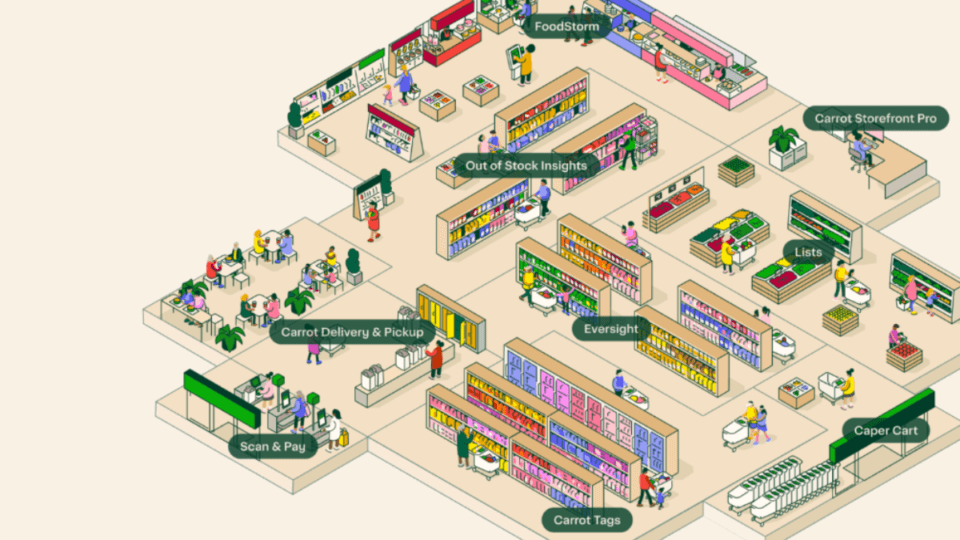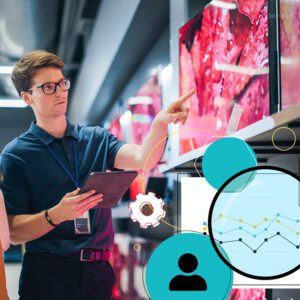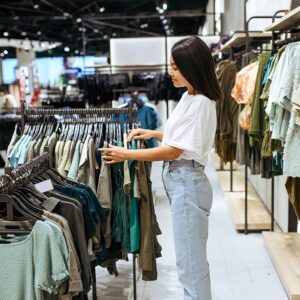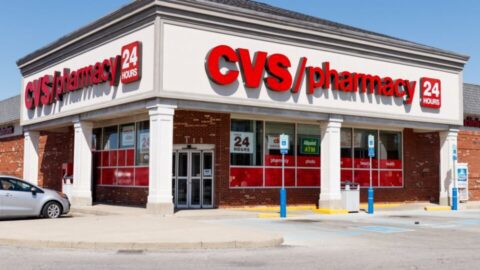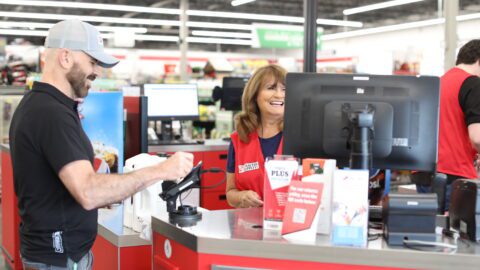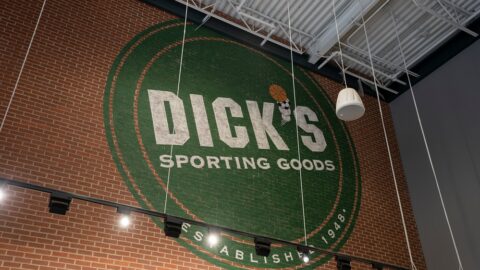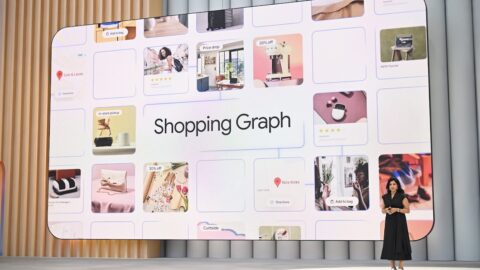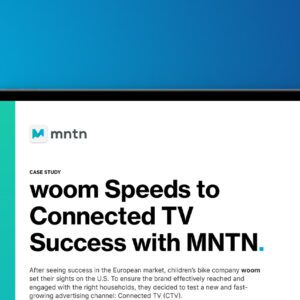Since its 2012 debut, Instacart has made significant progress in convincing Americans that grocery shopping can be done online. The pandemic helped, of course, but that alone can’t account for the company’s impressive growth over the past 13 years.

More than 1,500 retail banners and 85,000 individual stores are now available on the Instacart app. In its most recent quarter (Q3 2024, which ended Nov. 12, 2024), the company handled 72.9 million orders (up 10% YoY), which drove $8.3 billion in gross transaction value. Since going public in September 2023, the company’s stock has maintained a steady upward trajectory, from the $30 IPO price to nearly $53 as of Feb. 19, 2025. And that’s just the company’s first act, according to David McIntosh, Instacart’s Chief Connected Stores Officer.
McIntosh’s title gives a hint of where Instacart is headed next: “We think about online delivery as Act One,” he said in an interview with Retail TouchPoints. “Act Two is digitizing the in-store experience with services like Caper [smart carts] and FoodStorm [order management]. Where we’re going is to unify the experience. Our vision is that, on a 10-year horizon, customers won’t have to choose between shopping online or in store; it’ll be one single, unified mode, powered by Instacart.”
This sentiment was echoed by Instacart CEO Fidji Simo in his Q3 2024 letter to shareholders: “Because we have already built integrations with retailers’ core systems — from their point-of-sale to catalog to loyalty programs to couponing — we can much more easily launch new technology offerings for their stores as well, which gives us a right to win in omnichannel,” he said. “Our strategy of deeply integrating with our partners sets us apart from the competition and will fuel our future growth.”
It’s an interesting point — while Instacart has a number of competitors in online delivery, as the company continues to rapidly expand its business proposition, it’s harder to identify exactly who Instacart is competing with. Given McIntosh’s response to that question, Instacart clearly sees itself as playing in a whole new league these days: “A lot of our retailer partners work with us because they want to grow and uplevel their business, and when they talk about their competition, they often cite Amazon,” he said. “We’re building our technology for our retailer partners to help them compete with much, much, much larger players and grocers.”
McIntosh took Retail TouchPoints behind the scenes of Instacart’s evolution, from online delivery company to full-fledged technology partner helping to reshape one of consumers’ most fundamental shopping occasions — and where it’s looking next.
Horizon One: Bringing Grocers Online
While its business has now evolved beyond simply providing online delivery, Instacart’s newly expanded role in the grocery ecosystem couldn’t have existed without that first step, which involved not only bringing retailers’ offerings to the centralized Instacart marketplace but also building white-label ecommerce storefronts for them.
“It seems obvious now, like the world’s always been this way, but a decade ago, nothing was digitized in North American grocery,” said McIntosh. “So to get retailers excited about the proposition of moving their business online, Instacart approached them both with the marketplace and their own site — it was that two-fold proposition that really drove that first wave [of adoption].”
From that point, in-store digitization was simply a natural progression, for both Instacart and the retailers it serves. “So many of our retail partners were coming to us saying, ‘Hey Instacart, you’ve successfully helped me digitize my business and bring it online, but can you also help me in the store? We’re facing all kinds of problems in the store. How do we drive more loyalty adoption? How do we digitize more of our customers? How do we unlock incremental revenue streams?’,” said McIntosh.
“And then on the other side, we were hearing from our online shoppers, and they were saying, ‘Instacart, I love the convenience of online, I love the personalization of online, but I also like going to the store.’ So many customers are omnichannel customers, and they were saying, ‘How can I get what I love about shopping online in the store as well?’ That was really the birth of Connected Store — it was the intersection of those two insights from our retailers and from our consumers.”
Horizon Two: The Connected Grocery Store

Instacart now has a full range of in-store digitization solutions, with more on the way. “Broadly, we think about [our remit] as anything that can uplevel the in-store environment, either for consumers or, in some cases, it’s retailer-facing,” explained McIntosh.
This includes things like the company’s Caper smart carts and its new FoodStorm order management system for foodservice areas like the deli department, as well as less visible solutions like the pick-to-light system, which ties into retailers’ electronic shelf labels to help Instacart Shoppers find the right products quickly as they’re fulfilling online orders. This also includes functionality such as an API for retailers that allows Instacart Shoppers to signal when inventory is running low or out of stock.

And as retailers bring in more solutions, those solutions become more interconnected. For example, a retailer with both FoodStorm and Caper can enable customers to place deli orders from their smart cart and continue shopping while their food is prepared.
That modularity is central to the Connected Stores offering, said McIntosh. Retailers can take the full suite or start with one element and build from there. “We’re observing a natural gravity around the product suite,” he said. “A retailer doesn’t have to take everything. They can start with one product. But they’re seamlessly integrated, so it’s really easy for a retailer to stack them on top over time.”
The Win-Win-Win Solution: Caper Cart
For many retailers the starting point is Caper carts, which offer shoppers both a more seamless and a more personalized shopping experience simultaneously.
The benefits to retailers can be immense — McIntosh said that many Caper partners see as much as a double-digit lift in basket size among customers using the smart carts. But what exactly is driving this?
One answer is that the connected capabilities of the cart allow retailers to provide customers with more relevant promotions and recommendations. Approximately 90% of Caper cart users log in with their loyalty card at the start of their shopping trip, allowing retailers to “engage with customers digitally in a whole new way,” said McIntosh.
When that loyalty ID is then combined with intel from the cart’s various sensors that tell it where the customer is in the store and what she currently has in her cart, it creates what McIntosh calls a “win-win-win” scenario for customers, retailers and brands.
“We construct an understanding of what’s the most relevant thing for you to see, which means CPGs can now access consumers in brand-new ways,” said McIntosh. “They can get the measurability and the targeting and the personalization they love on our online app products in the store [environment]. They make new deals available to customers, which customers love, and then retailers win as well, with lower prices for consumers and incremental revenue streams.”

This has led to Caper’s newest offering, gamification, which can take a number of different forms depending on the retailer and its CPG relationships. Retailers can offer a treasure hunt-style map-based game; a Temu-style spin-to-win discount; or rewards for certain customer behaviors, like total spend or number of shopping trips in a given time period (for example, $5 off if you come in and use Caper four times in one month). And retailers can open that opportunity to their CPG partners — $1 off if you buy three Pepsi products, for example.
“The combination of that loyalty adoption, with the screen, with an understanding what’s in your cart, with the location system, unlocks all these new possibilities around gamification that not only digitize customers in the store but just make the shopping experience so much more fun,” said McIntosh. “It’s very rare to find something with so much consumer pull. It transforms grocery shopping from a utility to an adventure.”
Bringing AI to the Edge of Retail
This kind of real-time data intake, analysis and subsequent personalization in a physical environment was impossible as recently as just a few years ago. But just as retailers are rapidly adopting AI in their backend and online systems, AI also is part of the magic that drives the Caper experience.
However, as McIntosh points out, Caper’s use of AI is very different from other, more common online applications because of where it happens: “We’ve heard a lot about AI in the cloud,” he said. “When you hear about OpenAI and Anthropic, what they’re basically doing is building systems that work really well in the cloud. What we’re doing with Caper sits at the opposite end of the spectrum. We’re building AI models that have to respond in 200 milliseconds at the edge [that is, close to the user] to make the experience good. You can’t be waiting minutes to get a recommendation as the customer moves through the aisle.
“Edge AI is a totally different technological approach, a totally different technological expertise, a totally different data set [than cloud AI],” McIntosh added. “What’s also unique about our approach is the ability to connect with the cloud piece. For example, with Carrot AI [Instacart’s AI suite] I can say, ‘Make me a meal plan for a family of five under $X per month and avoid these specific foods that my kids don’t like,’ build that list all in the cloud and then sync that list to Caper, the edge AI experience. We’re building an advantage in AI overall, leveraging our data set both in the cloud and at the edge, and then connecting them together in a very unique way.”
The Future Horizon: Powering ‘Every Store Transaction’
As one might imagine, the technology that Instacart is bringing to stores today is only the tip of the iceberg; after all, the Connected Stores division has been around for less than three years. The company’s growing ad business is increasingly coming into play across its platforms, including on Caper. New integrations with pricing and promotions platform Eversight (which Instacart acquired in late 2023), such as list-syncing from app to cart, are in the works. And the opportunities for Caper seem almost limitless; for example, McIntosh mentioned future plans to incorporate side-facing cameras on the carts that could provide inventory information, such as stock levels, to retailers, as well as heat maps to help them understand store traffic patterns.
The ultimate goal is “to power every in-store transaction,” said McIntosh, and while the company is still focused primarily on grocery, as indicated by the expansion into other verticals on the marketplace side of the business, Instacart doesn’t intend to limit itself. “We’re still very grocery focused, but we have opened up [delivery] to other verticals that we think our customers are asking for,” noted McIntosh. “On the Connected Store side, we’ve definitely got an interest outside of grocery, it’s something that we would entertain. At the moment I would say that it’s [relegated to] anything that comes down to a big basket shop, by that I mean you’re shopping with a cart, not something like a hand basket.”
And as McIntosh points out, there’s still plenty of untapped opportunity in the grocery realm. “In my view, we’re just at the beginning of digitization,” he said. “Online grocery penetration in the U.S. is around 10%, and depending on the study that you look at, on a five- to 10-year horizon the estimates are that penetration anywhere from doubles to triples. What that means is that even in that period of time, you’re going to have more than 70% of customers still going to the store. There’s a huge opportunity to give those customers an experience that leverages the things they like about shopping online — it’s more convenient, it’s more personalized and so forth.
“One of the things I’m most focused on in the coming year is developing new formats that are win-win-win: They’re good for consumers, they’re good for CPGs because they can capture consumer attention in new ways, and they’re good for retailers,” McIntosh added.




